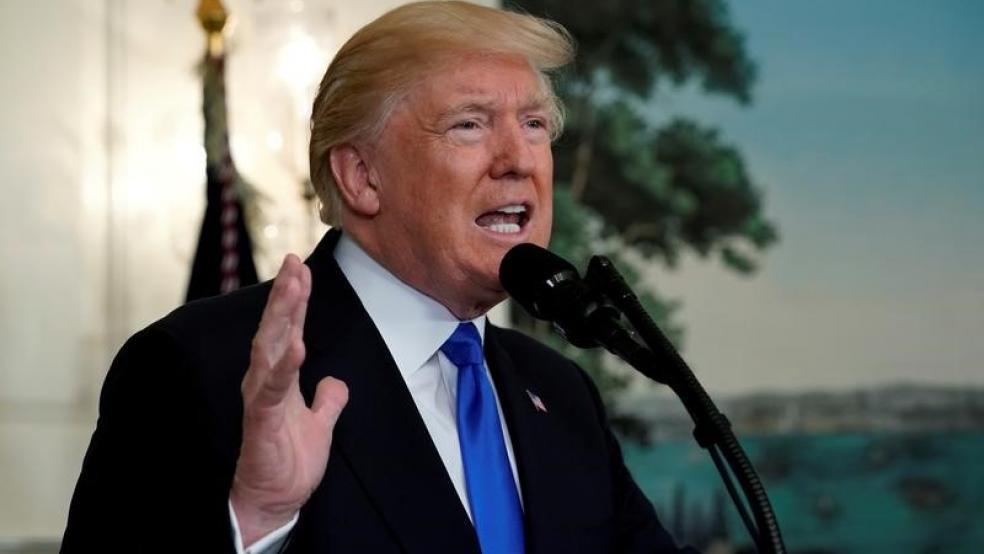Last week the Trump administration announced “a workforce training initiative focused on skill-based apprenticeship education” with a goal of creating one million apprenticeships over the next two years. The motivation behind the initiative was explained by Ivanka Trump: “The reality is that there are still Americans seeking employment despite low unemployment rates, and companies are struggling to fill vacancies for positions that require varying levels of skills and training. So the Trump administration is committed to working very closely to close the skills gap."
But is a “skills gap” really a problem in the US? If a skills gap exists, then the demand for workers exceeds the supply. That is, at the wage the industry is offering, there are job openings that cannot be filled.
Related: Trump Takes a Second Crack at Jobs With Apprenticeship Program
One solution to this problem is for firms to increase wages to attract more workers. If there aren’t enough workers with adequate training in the local area to fill the open positions, then the higher wage offer will attract qualified workers from other regions of the country to move and take the jobs.
Some proponents of the skills gap hypothesis argue that no such workers exist. But the evidence says otherwise. It points to a skills mismatch – workers employed in jobs that do not match their qualifications, or unemployed workers with the right skills but located in the wrong place – rather than a shortage of workers with the requisite skills. Once again, the solution to this problem is for firms to offer higher wages and induce qualified unemployed workers to relocate or change jobs, something they have been reluctant to do even as more and more of the income share has gone to business owners rather than workers.
Rising wages would allow workers to reclaim some of the income they have lost. So firm owners would prefer to fix the problem in another way. If the supply of qualified workers can be increased sufficiently through government supported retraining programs and increased immigration, then the upward pressure on wages will disappear.
I would not be opposed to solving a skills gap problem – if it actually existed – in part through a temporary increase in immigration. But that shouldn’t happen until there is a sustained and rapid increase in wages, evidence that there truly is a problematic shortage of US workers.
Related: Why Job Openings Are Surging to Record Highs
I am also not opposed to job assistance programs, but the question is the effectiveness of these programs and whether they should be paid for by the government or by individual firms. On the effectiveness, if the problem is really that skilled workers are available to take these jobs but they are mismatched occupationally and geographically, as it appears to be, then programs that help to match workers with jobs and subsidize moving expenses can be helpful. It will still require employers to increase their wage offers to make it worthwhile for people to relocate or change jobs, but government-supported programs that aid the matching process still have a role to play. Unfortunately, to help pay for his apprenticeship program, Trump has proposed large cuts to Labor Department programs that have successfully helped workers find jobs.
As to whether job retraining programs ought to be paid for by the government or individual businesses, one factor to consider is the degree of specialization in training. The government should help with very general skills that are useful across a wide variety of occupations, but the more specialized the training becomes in terms of skills that are only useful in a particular industry, the larger the share of the costs that should be paid by the firms who benefit. Generalized training provides widespread help, but specialized training provides a subsidy to a particular industry. In effect, the government is picking winners and losers.
And the choice of winners could become political, especially in a Trump administration. It’s not hard to imagine the “winners” being chosen with an eye toward those who are loyal to Trump’s political needs. Perhaps that’s why his proposed apprenticeship program will create “a category of programs that industry groups and other third parties could develop and then submit for Labor Department approval.”
Related: Trump Has a New Reason for His Military Buildup: Job Creation
Will apprenticeships in alternative energy firms that threaten coal jobs have an equal chance? As usual with a Trump proposal, the details are vague, so we don’t know precisely what the actual proposal will look like. Generally, however, awards should be granted through an open process with clear and objective criteria that give all firms and industries an equal chance.
The problem isn’t a skills gap. There will always be counterexamples to point to in a technologically dynamic economy, but the labor market signals we would expect to see if there was a widespread shortage of qualified workers are not there.
The problem is the reluctance of firms to raise wages. Give them time. If businesses need workers as much as they say – if the unfilled positions are that important – business owners will eventually stop whining about the skills gap and begin increasing wages to attract the workers they need.






